The Economics and Statistics Division maintains archives of previous publications for accountability purposes, but makes no updates to keep these documents current with the latest data revisions from Statistics Canada. As a result, information in older documents may not be accurate. Please exercise caution when referring to older documents. For the latest information and historical data, please contact the individual listed to the right.
<--- Return to Archive
For additional information relating to this article, please contact:
March 01, 2024RURAL HOUSING PROFILES, 2022 Statistics Canada released Rural Canada Housing Profiles (RCHP) data today for the 2022 reference year. It includes data on building permits, building investment, and information from the Canadian Housing Statistics Program and the 2021 Census of Population. All data are in current dollar values. The RCHP database defines rural and small town (RST) areas as communities outside census metropolitan areas and census agglomerations according to the Statistics Canada 2016 Standard Geographical Classification.
Building permits
Building permit values in rural areas of Nova Scotia were up 6.2% in 2022 to $622 million. Urban areas saw building permits increase at a faster rate in 2022, growing 23.6% to $1,441 million.
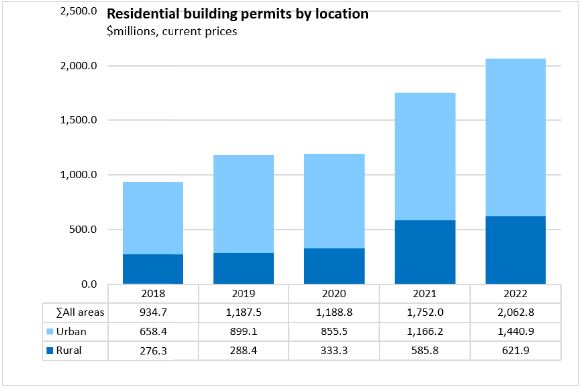
In rural areas of Nova Scotia, single unit dwellings make up the largest share of building permit values. Growth in building permits was primarily due to growth in singles, as well as growth in single - cottage permits. There was a decline in multiples - apartments in 2022 in rural areas of Nova Scotia.

In urban areas of Nova Scotia, multiples - apartments make up the largest share of permits, followed by singles and row houses.
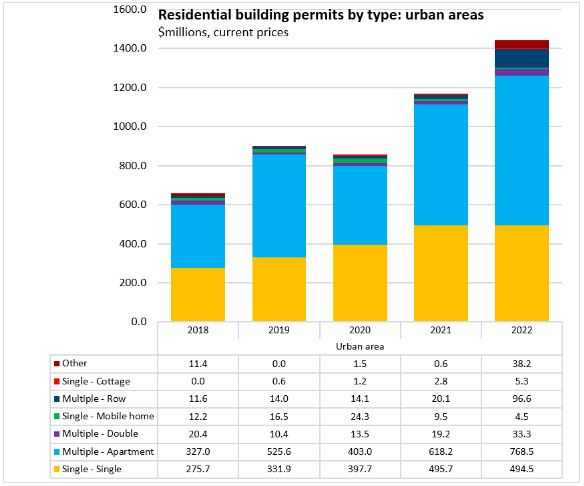
New construction makes up the largest share of building permits across all areas of Nova Scotia. In rural areas there is a larger share of alternations and improvements compared to urban areas.
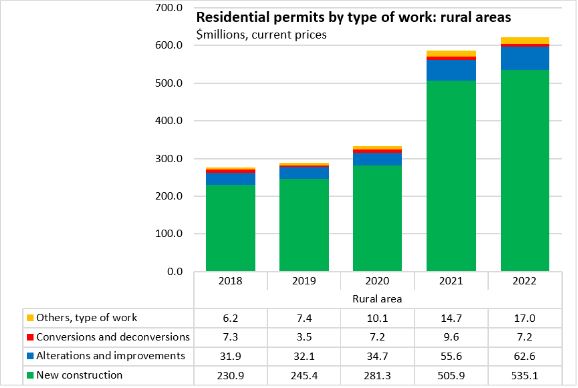

Building investment
In 2022, rural housing investment increased 9.2% to 1,599.7 million. Urban housing investment increased by 29.5% in the same year to $3,024.9 million.

Single dwelling investment increased to $1,285.5 million and makes up the largest type of rural housing investment. In urban areas of Nova Scotia, single dwelling units are still the largest category but comparable in magnitude to investment in multiples.
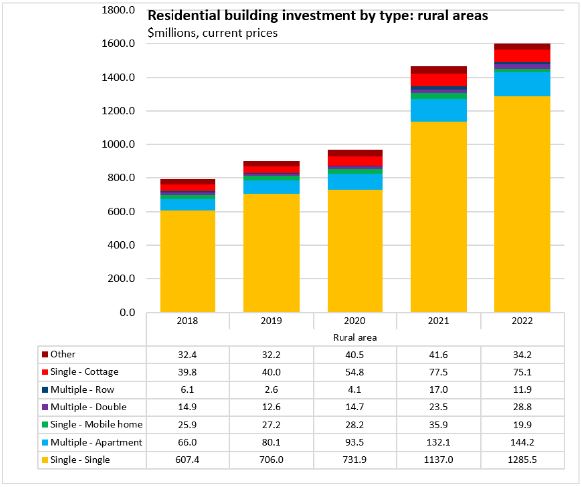
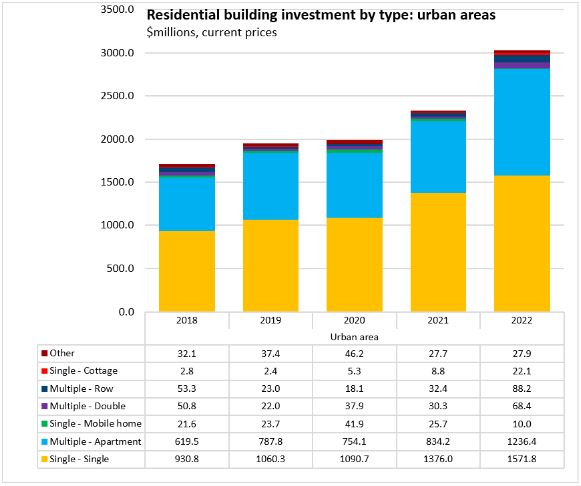
Building investment in alterations and improvements makes up the largest share of work in rural areas of Nova Scotia, followed by new construction. In urban areas of Nova Scotia, new construction overtook alterations and improvements as the largest investment category in 2022.
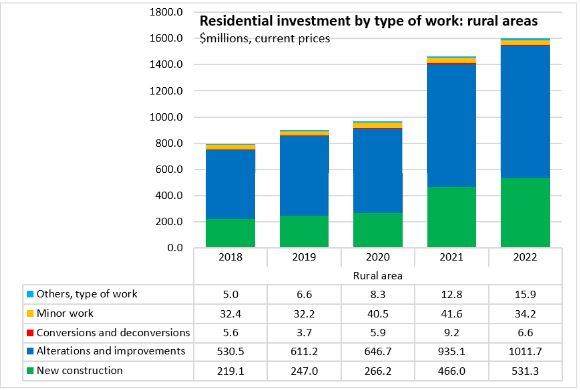

Residential property values (2021)
Median property assessment in Nova Scotia was $134,000 in 2021. Median property assessments are typically higher in urban areas of Nova Scotia in 2021 compared to rural areas. Differences in assessment values partly reflect differences in composition of residential properties (i.e. cottages in rural areas typically have a lower value).

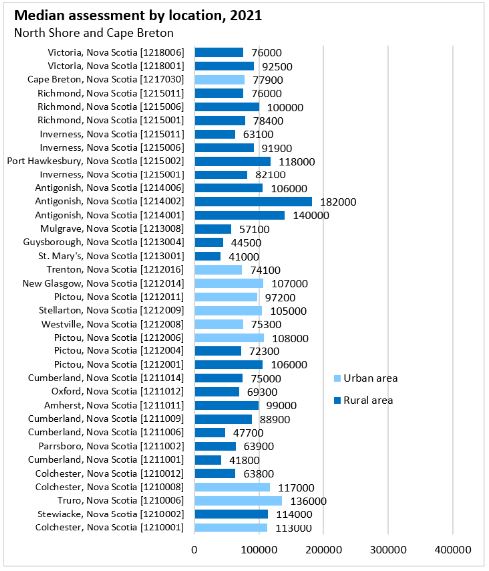
The median assessment per square foot in Nova Scotia (all areas) in 2021 was $117 per square foot.

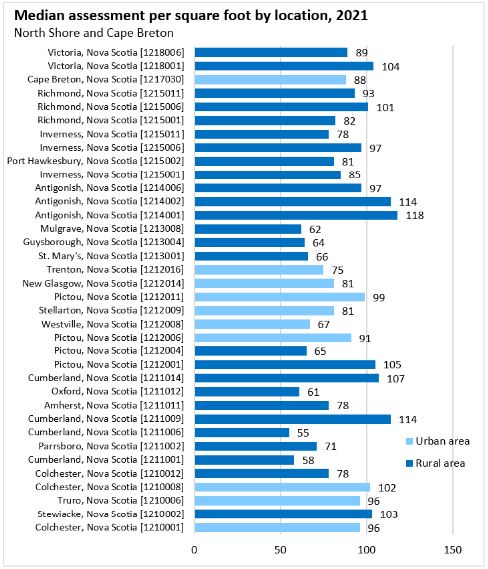
Source: Statistics Canada Table 46-10-0075-01 Rural Canada Housing Profiles, residential building permits, numbers and values, by type of residential building and type of work; Table 46-10-0076-01 Rural Canada Housing Profiles, values of investments in residential building construction, by type of residential building and type of work (x 1,000); Table 46-10-0077-01 Rural Canada Housing Profiles, residential property characteristics
<--- Return to Archive